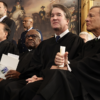One foot on a banana peel, the other in the grave. That’s where Fisker Automotive and SoloPower find themselves, struggling for survival despite generous government handouts in the form of loan guarantees and tax breaks. Should either company take a turn for the worse, a tombstone in Heritage’s “Green Graveyard” awaits.
Ever since Solyndra became a household name, taxpayers have become acutely aware of the government’s bad bets, which have taken quite a toll on taxpayers’ wallets. In fact, according to Heritage’s calculations, the government has backed 20 now-bankrupt green energy companies, and in doing so has placed over 2.6 billion taxpayer dollars at risk. As the downward trajectory of Fisker Automotive and SoloPower demonstrates, more losses are still to come. Both companies were in the headlines this week. SoloPower, a solar manufacturing company, announced its plan to close the doors of its Portland plant and gut its remaining workforce.
Fisker Automotive, recipient of a $529 million loan from the Department of Energy (DOE), failed to make its $10 million loan payment to the DOE earlier this week. In fact, Fisker’s current plight makes SoloPower’s situation almost look good. No matter how hard the government tried and no matter how much money it offered, it still wasn’t enough to put an ill-fated company back together again. The New York Times summed up what’s going on with Fisker well by noting, “No electric vehicle initiative backed by Washington seems more of a debacle than Fisker.”
The Daily Signal depends on the support of readers like you. Donate now
Considering this, it may not be surprising to learn that today a subcommittee of the House’s Oversight and Government Reform Committee is set to hold a hearing to examine the DOE’s bad bet on Fisker Automotive.
In addition to Fisker executives, Heritage’s Nick Loris will testify before the subcommittee. Loris’s testimony will provide a good reminder that the government, in this case the DOE, has absolutely no place in playing venture capitalist. Regardless of a company’s ultimate fate, the government should not be “investing” in the private sector. As Loris has noted many times before, “Two kinds of companies seek subsidies: economically uncompetitive companies… which need the subsidy to survive, and potentially competitive companies, which use subsidies to pad their bottom lines. Neither case can be justified.”
Despite the plethora of evidence to the contrary, some still insist on defending government expenditures and loan guarantees by pointing to examples of successful companies who’ve received the assistance. Here’s the catch: A single successful company does not equal a successful program. Loris explains that “even if a project receives a DOE loan or loan guarantee, it is a mistake to attribute that company’s success to the federal government’s investment.”
Fisker Automotive and SoloPower are not the first companies to falter after being offered taxpayer funding, and they likely won’t be the last. The only way to ensure these bad bets don’t continue to occur is by getting the government completely out of the way and allowing the free-market to be the driver of energy investment.






























